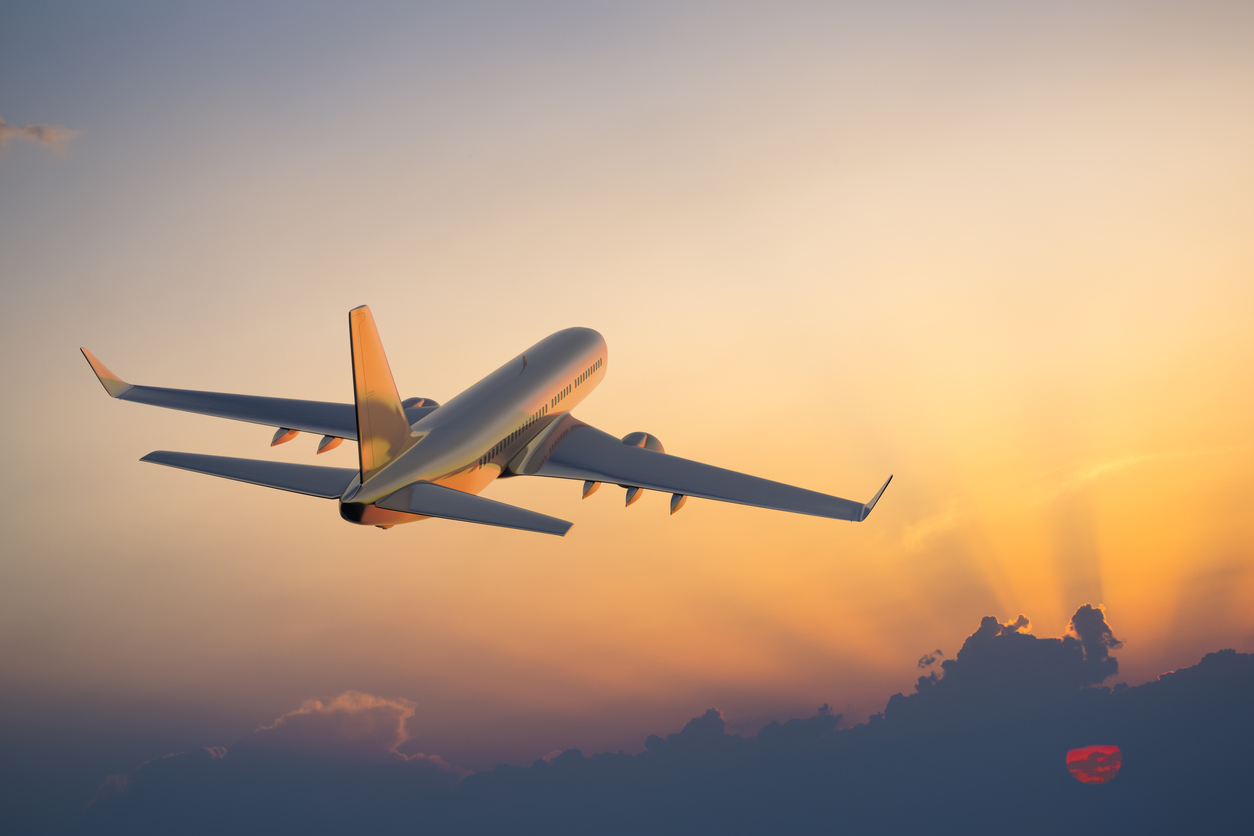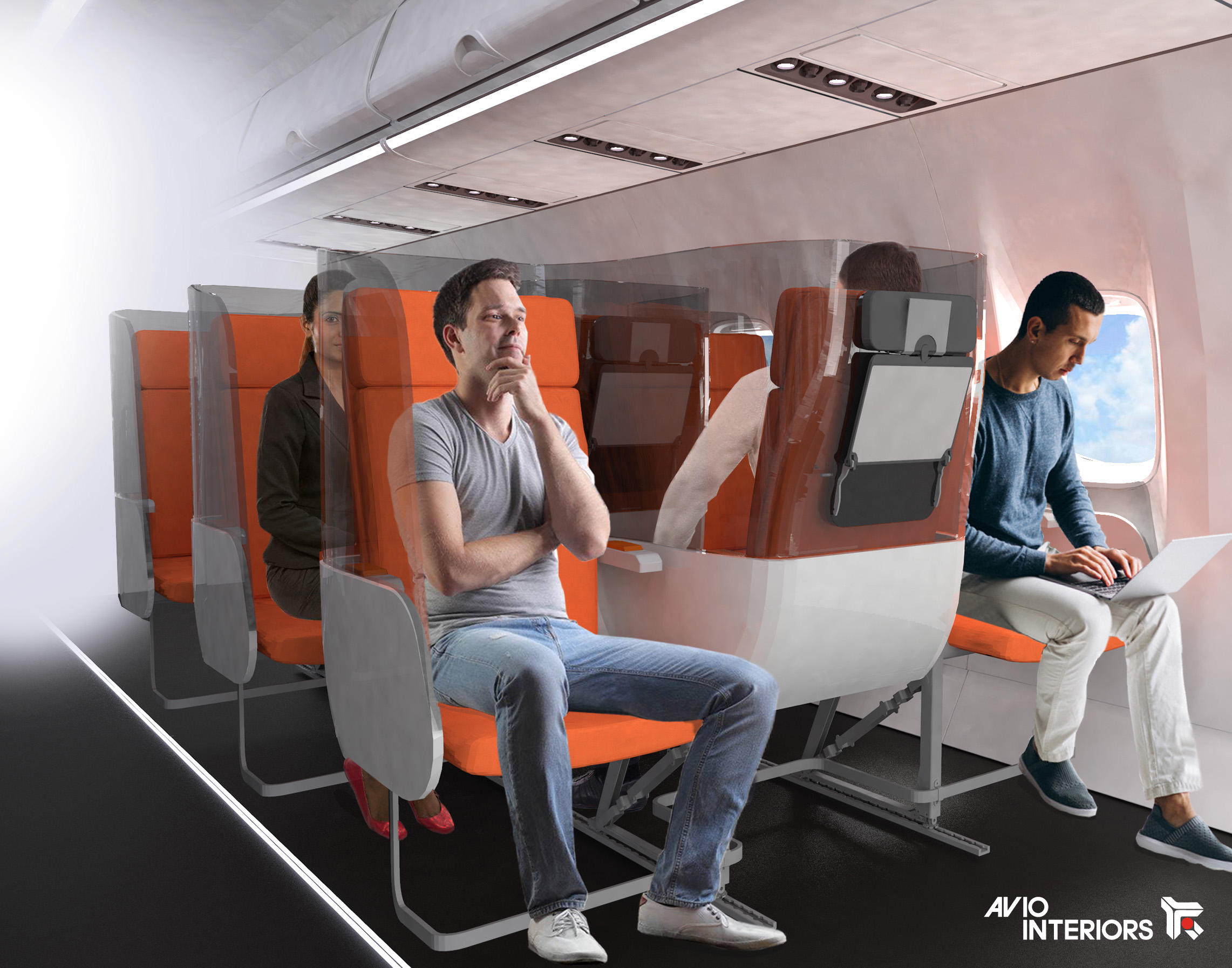
PPE kits, redesigned seats: Aviation industry fastens belt for COVID era

As airline companies in India are waiting eagerly to resume services after the lockdown, ideas have begun to emerge to ensure the safety of passengers and crew. The post-lockdown plans range from providing safety gears to redesigning seating arrangements to avoid the risk of coronavirus infection.
While face masks and sanitizers will be all-pervasive, it will be hard to get used to rapid COVID-19 tests at airports and flights getting cancelled or delayed if a passenger coughs or sneezes. To ease this, aviation players across the world are weighing various ideas. They include anti-viral polymer coating for frequently-touched items and a transparent cover for each seat to create a partially-enclosed space for the head and up to the shoulders.
Airports will look more like hospitals than malls
Instead of appearing like a glitzy mall with rows of retail stores, restaurants, lounges and recreational facilities, airports in the COVID-19 era will resemble upmarket medical facilities with rapid Coronavirus tests for passengers, crews and other staff. The Bureau of Civil Aviation (BCAS) has recommended that airports should be made less crowded, facilitate social distancing, and keep open only food stalls, pharmacies and ATMs.
Passenger aircraft or space shuttle?
The situation is likely to be grimmer inside aircraft. Passengers may have to wear masks if a suggestion to this effect is accepted. This is to avoid the other alternative of leaving middle seats unoccupied. According to top aviation industry sources, a proposal is under discussion to provide personal protection equipment (PPE) kits to all passengers near check-in counters o that they are protected to the hilt while they are on board.
Similarly, pilots and crew will also wear masks. Gone is the fun of ordering a tea or a sandwich before settling down to work on a laptop or a tablet. Authorities want only drinking water to be provided onboard and all foodstuff avoided, so that activity inside the cabin can be reduced.
Another suggestion is a doctor and paramedical staff on all flights. The Bureau of Civil Aviation Security even wants the last three rows to be left vacant, in case a passenger has to be isolated. In more ways than one, it is going to be an atmosphere inspiring anxiety rather than the good old days of merriment while cruising high in the sky, with dining and duty-free shopping.

Seating solutions vital for commercial viability
Authorities want vacant seats on-board to keep passengers away from each other. Even if this is done, how does one ensure social distancing when passengers move on the aisle? On the other hand, airlines are very clear that vacant seats mean there will be no commercial viability at all. “In that case, it is better not to operate flights. There will be huge losses,” said a senior executive of a private airline.
RyanAir has openly ridiculed the idea as it goes against the budget carrier philosophy for filling all seats. As a solution to this issue, a different model of seating has been suggested by Aviointeriors, a company based in Italy. It is incidentally one of the countries worst affected by COVID-19. The seat maker has designed what is described as a “Janus” seat — with the middle passenger seated facing the opposite direction while the passengers on sides face the cockpit or the nose of the aircraft.
However, this will entail re-configuration or installation of new seats resulting in expenditure and certification from aircraft makers as well as regulators. As an alternative, Aviointeriors has designed a transparent head-and-shoulder cover for passengers that can be fitted to the seat. This is a cheaper option and can be effective in the transmission of Coronavirus by air. Interestingly, medical authorities have approved none of the social distancing ideas, including the vacant middle-seat concept.

Tumbling like ninepins
Airline companies in India are worried about the outcome of social distancing norms once the COVID-19 ban is lifted. There are concerns about passenger loads being low and flight frequencies having to be curtailed. It may be a while before anxious passengers get back to air travel and a lot will depend on COVID-19 not sneaking back. Airline companies in India are cash-starved and are not in a position to generate cash with advance sales.
Aviation industry insiders feel it might take months before normal flight schedules can be operated as several issues have to be ironed out to win the confidence of consumers. Government assistance of the type happening the US is unlikely in India and the fuel price decline does not compensate for the hit suffered by airlines, they feel.
Globally, many carriers like Virgin Australia, Trans States Airlines, Flybe and Compass have gone belly up and many others are on the brink, looking for a government bailout. The situation in India could also be similar if air traffic continues to face disruption. Many airlines will reveal empty pockets in the months ahead.
Insurance premia seen moving northwards
Another major cause of concern is the apprehended hike in insurance premium that is feared by airline companies across the world. Global carriers feel that insurance firms and reinsurers may hike premia in view of the current situation where an airline company may be held liable for coronavirus infection happening on a flight under certain circumstances. Affected people may sue airline companies for not eliminating the risk on board.
This is true in the case of international travel and travel within countries like the US. At the same time, several steps taken to prevent coronavirus infection, including strict social distancing norms, may result in on-board sales and other getting banned. This may force a hike in fares even as passengers stay away in the near future — a double whammy. Airport operators will also suffer a decline in non-aeronautical revenues and fall in footfalls.
Authorities not on same page
Aviation veterans across the globe fear that regulations and guidelines may keep changing due to the fluid situation created by the coronavirus infection. In the case of a fresh bout of COVID-19 outbreak, authorities may impose new regulations, at least temporarily. It could be a case of new regulatory response to every turn in the Coronavirus drama.
Therefore, airline companies have to be alert all times, at least for a year, to adopt different protocols at short notice. The US, for example, fears another COVID-19 outbreak in winter and that may result in reimposition of restrictions and new curbs as well.
Future of air travel
Several aviation companies have also been developing many new technologies that may not be useful only during the coronavirus situation, but can be deployed in future too. One such technology is an anti-viral polymer coating that can destroy microbes and self-clean itself. This coating can be applied on frequently touched items like doorknobs and seatbelts of an aircraft and can provide a lot of risk mitigation during the current contagion.
The anti-viral polymer coating can be done on plastic, glass, metal and fabric, making it versatile for the air travel industry. A similar technology that is also under discussion is pasting of anti-viral tapes on frequently-used surfaces and removed at frequent intervals to be replaced with fresh tapes. This technology is cheaper than the anti-viral polymer coating that is permanent.
Aviation companies are also looking at the use of toilets that do not require any touch function and can be used with voice commands and sensors. While this can be a costly proposition now, incorporating it at the stage of aircraft manufacturing can be feasible. Many of these technologies and systems may click, while others fade out. But one thing is clear — air travel will never be the same again after COVID-19.


